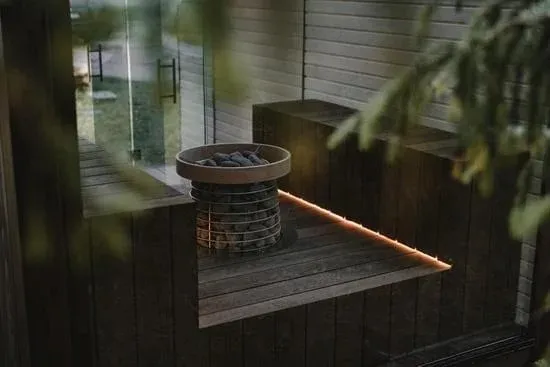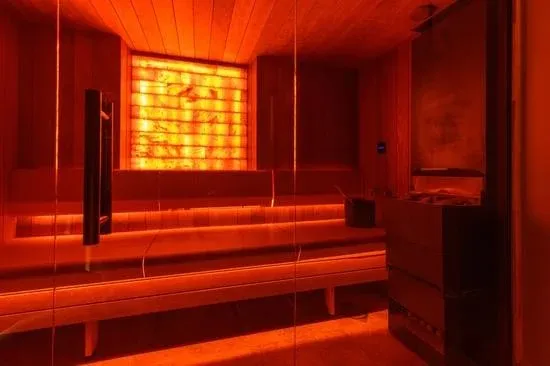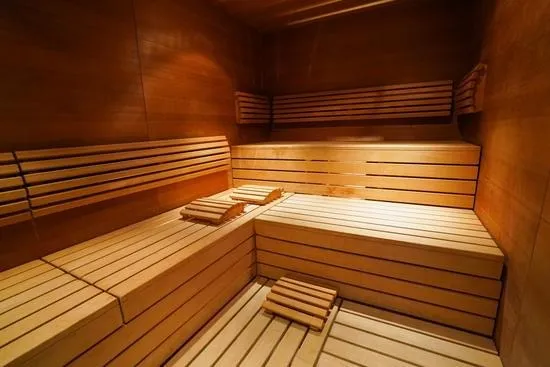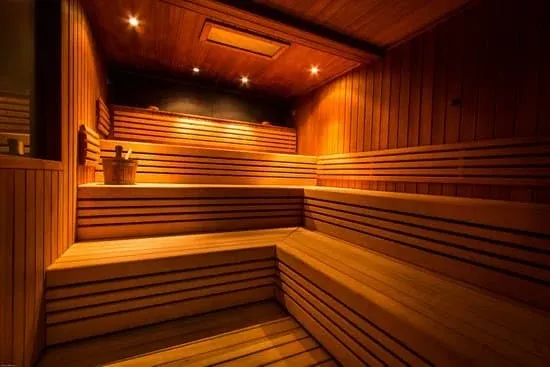Let me tell you about my first portable sauna. I was skeptical—really skeptical. How could something that folds up and fits in a closet deliver real health benefits? It felt too convenient to be effective.
Then I tried it. Fifteen minutes in, I was sweating profusely. Twenty minutes later, I had that post-sauna glow I'd only ever gotten from traditional saunas. And when I was done? I folded it up, slid it under my bed, and went about my day.
That experience taught me an important lesson: sometimes convenience isn't the enemy of effectiveness. Sometimes it's what makes consistency possible. Many people start their sauna journey at local wellness centers before investing in permanent home installations, and portable units bridge that gap beautifully.
What Exactly Is a Portable Sauna?
Portable saunas are collapsible, tent-like enclosures that use infrared heaters or steam generators to create a sauna environment. You sit inside with just your head exposed, allowing you to breathe cool air while your body heats up.
They typically:
- Set up in 5-10 minutes
- Plug into standard 120V outlets
- Fold down for storage
- Weigh 15-25 pounds
- Cost $200-$600
The beauty is in their simplicity. No installation, no permits, no electrician. Just unfold, plug in, and go.
Types of Portable Saunas
Pop-Up Infrared Saunas
These are the most common. They use far-infrared heating panels built into the tent walls. You sit on a provided chair or bring your own. The tent wraps around your body, with your head staying outside.
Pros:
- Quick heat-up (5-10 minutes)
- Energy efficient
- Most portable option
- Easiest to store
Cons:
- Head stays outside (no facial benefits)
- Less immersive experience
- Shorter lifespan than permanent units
Steam Portable Saunas
These use a separate steam generator that pipes steam into the tent. More traditional feeling, but requires water management.
Pros:
- Traditional sauna experience
- Humidity benefits for respiratory health
- Can add aromatherapy oils
Cons:
- Water management hassle
- Longer setup and teardown
- More maintenance required
Sauna Blankets
The ultimate in portability—literally a heated blanket you wrap yourself in. Infrared technology in a zippered cocoon.
Pros:
- Most compact storage
- Easiest to travel with
- Can use lying down
- Usually cheapest option
Cons:
- Most restrictive feeling
- Harder to cool down if needed
- Vinyl materials may not breathe well

Do Portable Saunas Actually Work?
This is the million-dollar question. The short answer: yes, absolutely. The longer answer requires some nuance.
Research from the Journal of Complementary and Alternative Medicine shows that infrared heat therapy—regardless of the enclosure type—provides measurable cardiovascular benefits. Your body responds to the heat stimulus, not the fancy wooden bench.
What portable saunas DO provide:
- Cardiovascular conditioning through increased heart rate
- Detoxification through profuse sweating
- Muscle relaxation and pain relief
- Stress reduction and improved mood
- Better sleep quality
- Skin benefits from increased circulation
Limitations compared to permanent saunas:
- Lower maximum temperatures (typically 140-150°F vs 170-195°F)
- Less even heat distribution
- Shorter lifespan (3-7 years vs 15-30 years)
- Less social—these are one-person affairs
- Your head stays cool (which some see as a pro, others as a con)
The key insight: if you'll actually use a portable sauna 3-4 times per week, it's infinitely more effective than a $5,000 permanent sauna you use twice a month because it's too much hassle.
Who Should Consider a Portable Sauna?
Based on my experience at Ease Wellness and with our own family's wellness journey, portable saunas are perfect for:
Renters and Apartment Dwellers: You can take it with you when you move. No landlord approval needed. No installation headaches.
Sauna Newbies: Not ready to drop $2,000+ on something you're not sure you'll use? Start here. If you love it after three months, upgrade. If not, you're only out $300-400.
People with Limited Space: Small house? Studio apartment? RV living? Portable saunas work anywhere. They need about 2x2 feet of floor space during use and virtually nothing when stored.
Budget-Conscious Wellness Seekers: With quality units available for $300-500, portable saunas offer exceptional value. Operating costs are minimal too—maybe $5-8 monthly.
Athletes and Post-Workout Recovery: Keep it in your home gym. Use it right after training. Quick setup makes spontaneous sessions practical.
Frequent Travelers: Some people take their portable saunas on the road. Not something I'd recommend for a weekend trip, but for extended stays or those who travel for work, it's doable.
Choosing the Right Portable Sauna
Shopping for portable saunas? Here's what matters:
Material Quality
Look for durable, waterproof fabrics. Canvas with waterproof lining works well. Avoid cheap vinyl that cracks easily. Reinforced stitching matters—this thing will see a lot of temperature fluctuation.
Heating System
Carbon fiber panels are superior to ceramic for even heat distribution. Check the wattage—1000-1500W is ideal. Too low and it won't heat effectively; too high wastes energy.
Temperature Range
Look for models that reach at least 140°F. Some go up to 160°F, which provides more options as you build heat tolerance.
Timer and Controls
A built-in timer is essential. Remote control is nice-to-have. Digital displays help you monitor temperature and session duration.
Chair Quality
Most come with a folding chair. Make sure it's sturdy and comfortable. You'll be sitting for 20-40 minutes—comfort matters.
Foot Pad
An infrared foot pad that heats your feet while you sauna is a game-changer. Since your head is outside staying cool, your feet can get cold. A heated foot pad solves this.
Warranty
Expect at least a 1-year warranty. Better brands offer 2-3 years. Be realistic—these aren't lifetime purchases, but they should last 3-5 years with regular use.
Cost Breakdown
| Quality Level | Price Range | What to Expect |
|---|---|---|
| Budget | $150-$250 | Basic functionality, shorter lifespan, minimal features |
| Mid-Range | $300-$450 | Better materials, carbon heaters, decent warranty |
| Premium | $500-$800 | Superior construction, advanced controls, longer warranty |
Operating Costs:
- Electricity: $3-8 per month for 3-4 sessions weekly
- Replacement parts: Minimal (maybe a new zipper or chair over time)
- Maintenance: Nearly zero—just wipe down after use
Common Mistakes to Avoid
Going too cheap: That $99 special on Amazon? It'll fall apart in six months. Spend at least $250-300 for something that'll last.
Ignoring material quality: Thin, cheap materials don't retain heat well and tear easily. This is one area where quality really matters.
Not testing the chair: If possible, try to find reviews about the chair comfort. A wobbly or uncomfortable chair ruins the experience.
Forgetting about storage space: Even folded, these take up space. Make sure you actually have somewhere to store it where you'll remember to use it. Out of sight often means out of mind.
Expecting traditional sauna experience: Portable saunas are different. If you go in expecting a cedar-lined Finnish sauna experience, you'll be disappointed. Appreciate them for what they are.
Practical Tips for Success
Here's how to get the most from your portable sauna:
Pre-heat before getting in: Let it warm up 5-10 minutes empty. This ensures consistent temperature throughout your session.
Use a towel on the chair: Protects the chair and makes cleanup easier. Bring a second towel for wiping sweat during the session.
Stay hydrated: Drink 8-16 ounces of water before, keep water nearby during, and rehydrate after. You'll sweat a lot.
Use the time productively: Since your hands are free (usually), you can read, use your phone, or just meditate. I like listening to podcasts during sessions.
Clean after every use: Wipe down the interior with a damp cloth. Prevents odors and extends lifespan. Let it air out before folding and storing.
Start gradually: Begin with 15-minute sessions at lower temperatures. Build up to 30-40 minutes as your heat tolerance improves.
Portable vs. Permanent: Making the Choice
Should you go portable or invest in a permanent sauna? Here's my honest take:
Choose portable if:
- You're not sure sauna therapy is for you long-term
- Budget is a primary concern
- You rent or move frequently
- Space is severely limited
- You want to test before investing more
Choose permanent if:
- You're committed to regular sauna use
- Multiple family members will use it
- You own your home and have dedicated space
- You want the authentic sauna experience
- Budget allows for $1,500+ investment
Or do both: Some people start with portable, confirm they love sauna therapy, then upgrade to permanent while keeping the portable for travel or as a backup. There's no rule saying you can only own one.
Real Talk: Pros and Cons
After years of using both portable and permanent saunas, here's my honest assessment:
What I love about portable saunas: The convenience is unbeatable. Five-minute setup. Use it in any room. No installation. Take it when you move. The price point makes wellness accessible to more people.
What I wish was different: They're more maintenance-prone than permanent units. The materials wear faster. You don't get that immersive, whole-body-including-head heat experience. And honestly, they just don't feel as special as a beautiful wooden sauna.
But here's the thing: portable saunas have gotten thousands of people into regular sauna therapy who never would have done it otherwise. That's powerful. An imperfect solution that gets used beats a perfect solution gathering dust.
The Bottom Line
Portable saunas aren't trying to replace traditional saunas. They're making sauna therapy accessible to a whole new audience. They're removing barriers—cost, space, installation complexity—that kept people from experiencing the profound benefits of heat therapy.
For our family, a portable sauna was our entry point. It proved we'd actually use a sauna regularly. That proof of concept led to installing a beautiful infrared sauna in our home. The portable unit? Still gets used. My teenagers take it to their rooms. I use it while traveling. It's become a flexible tool in our wellness toolkit.
If you've been curious about sauna therapy but hesitant about the commitment, a portable sauna might be exactly what you need. It's a low-risk way to test whether this ancient healing practice has a place in your modern life.
And from my experience? The answer is usually yes.
FAQs About Portable Saunas
Yes, portable saunas provide genuine wellness benefits. While they may not reach the same temperatures as permanent units, they still induce sweating, improve circulation, and support detoxification. Studies show similar cardiovascular benefits to traditional saunas when used regularly.
Quality portable saunas range from $200-$600. Budget models start around $150, while premium options with better materials and features can reach $800. Operating costs are minimal at $3-8 per month for regular use.
References
- Hussain J, Cohen M. "Clinical Effects of Regular Dry Sauna Bathing." Evidence-Based Complementary and Alternative Medicine, 2018.
- Biro S, et al. "Clinical implications of thermal therapy in lifestyle-related diseases." Experimental Biology and Medicine, 2003.





